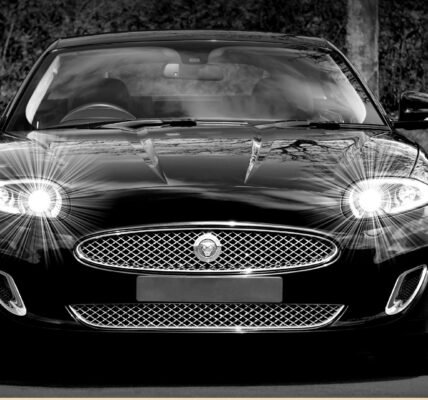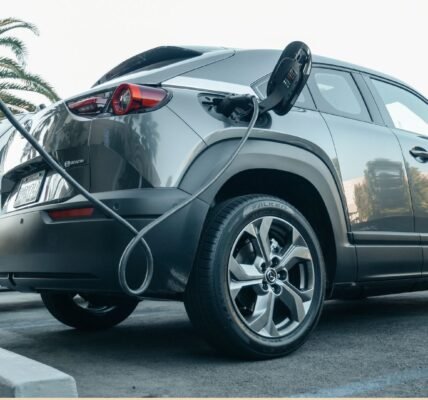Autonomous Fleets: Will Self-Driving Cars Replace Personal Vehicles?
The age of self-driving cars is no longer science fiction. Autonomous vehicles are making significant strides in the auto industry, and the question on everyone’s mind is whether autonomous fleets will replace personal vehicles. With the rise of autonomous technology, the future of transportation may look very different. This blog will dive into the potential shift toward autonomous fleets, the impact on personal vehicle ownership, and how self-driving cars could redefine mobility.
The Rise of Autonomous Fleets
Autonomous fleets have gained attention in recent years, with companies like Tesla, Waymo, and Uber leading the charge. These fleets consist of vehicles that can drive themselves using advanced artificial intelligence (AI), sensors, and cameras. Autonomous fleets operate without human intervention, offering a hands-free driving experience.
- Cost-Efficiency
One of the primary reasons why autonomous fleets may replace personal vehicles is cost-efficiency. Owning a car comes with many expenses, including fuel, maintenance, insurance, and parking fees. Autonomous fleet services could eliminate these costs for individuals. Instead of owning a car, people can subscribe to a ride-hailing service that operates autonomous vehicles, saving money in the long run. - Increased Accessibility
Autonomous fleets offer accessibility to people who do not drive. For example, elderly individuals, those with disabilities, or people living in urban areas with poor public transportation options could benefit from on-demand access to self-driving cars. As autonomous fleets replace personal vehicles, more people will gain access to reliable transportation without the need for a driver’s license. - Environmental Impact
Autonomous fleets can help reduce the environmental impact of transportation. Many self-driving vehicles are electric, which means fewer emissions compared to traditional gasoline-powered cars. By transitioning from personal vehicle ownership to autonomous fleets replacing personal vehicles, cities can decrease air pollution, lower carbon emissions, and promote sustainability.
How Autonomous Fleets Could Replace Personal Vehicles
The idea of autonomous fleets replacing personal vehicles may seem far-fetched, but the concept is already in motion. Autonomous vehicle technology has rapidly advanced, and the infrastructure to support it is developing. Here’s how autonomous fleets could potentially replace traditional car ownership:
- Subscription-Based Models
As autonomous fleets become more widespread, the idea of owning a personal vehicle may become outdated. Instead, consumers could subscribe to services that allow them to request a self-driving car whenever they need one. These services could operate similarly to ride-hailing apps like Uber or Lyft, but without the need for a human driver. Autonomous fleets replacing personal vehicles could become the new norm for daily commuting and transportation needs. - Fleet Sharing and Mobility as a Service (MaaS)
Fleet sharing is another concept that aligns with autonomous fleets replacing personal vehicles. In a fleet-sharing model, several users can access a self-driving car for short trips. This approach optimizes the use of vehicles and reduces the number of cars on the road. Mobility as a Service (MaaS) takes this further by providing access to multiple forms of transportation, including autonomous vehicles, public transit, and shared bikes, all in one app. - Urban Planning for Autonomous Vehicles
Cities may begin to design urban spaces with autonomous fleets in mind. As autonomous fleets replace personal vehicles, infrastructure such as parking lots, highways, and traffic systems will adapt to accommodate self-driving cars. With fewer privately-owned vehicles on the road, cities can repurpose land for other uses, such as green spaces or pedestrian-friendly zones.
The Benefits of Autonomous Fleets
The potential benefits of autonomous fleets replacing personal vehicles are vast. From cost savings to improved traffic flow, self-driving cars offer solutions to many modern transportation challenges. Here are a few key advantages:
- Reduced Traffic Congestion
Autonomous fleets could help reduce traffic congestion in busy cities. Self-driving cars can communicate with each other, optimizing routes and preventing traffic jams. With autonomous fleets replacing personal vehicles, there would be fewer cars on the road, resulting in smoother traffic flow. - Improved Road Safety
One of the main advantages of autonomous vehicles is improved safety. Human error accounts for the majority of traffic accidents. By eliminating the human factor, self-driving cars could drastically reduce the number of road accidents. As autonomous fleets replace personal vehicles, the overall safety of our roads could improve. - Convenience and Time Savings
Owning a car requires maintenance, fueling, and parking. With autonomous fleets replacing personal vehicles, these inconveniences disappear. Users can request a car when needed and spend their commute working, reading, or relaxing. This saves time and effort compared to the traditional car ownership model.
Challenges to Replacing Personal Vehicles
While autonomous fleets replacing personal vehicles seems promising, there are several challenges to overcome before this vision becomes reality. Here are a few potential obstacles:
- Technological Barriers
Despite significant progress in autonomous vehicle technology, there are still technological barriers to widespread adoption. Self-driving cars must operate flawlessly in various conditions, such as bad weather, construction zones, or complex city environments. These challenges must be addressed before autonomous fleets replacing personal vehicles can become a reality. - Legal and Regulatory Hurdles
Regulation is another critical factor in the shift toward autonomous fleets. Governments will need to create new laws and regulations that address liability, insurance, and safety standards for autonomous vehicles. Without a clear legal framework, it will be difficult to see autonomous fleets replacing personal vehicles at scale. - Consumer Acceptance
Many people still enjoy the freedom and independence of owning a personal vehicle. Convincing consumers to switch to an autonomous fleet model may take time. Public trust in self-driving technology is also a challenge. Before autonomous fleets replace personal vehicles, companies will need to demonstrate the reliability, safety, and convenience of this new transportation model.
The Future of Transportation: A New Era
As we look to the future, autonomous fleets replacing personal vehicles seems like a strong possibility. Autonomous vehicles have the potential to transform the way we think about transportation, offering a more efficient, safer, and sustainable solution. Although there are challenges ahead, the benefits of self-driving cars and autonomous fleets are hard to ignore.
Key Trends to Watch:
- Autonomous Ride-Hailing Services
Ride-hailing services using autonomous vehicles are already being tested in cities worldwide. Companies like Waymo and Tesla are leading the charge, with fully autonomous taxis expected to become more common in the next few years. As autonomous fleets replace personal vehicles, these services could become the primary way people get around. - Integration with Public Transit
Autonomous fleets may work alongside public transportation systems, offering last-mile solutions to commuters. Autonomous fleets replacing personal vehicles will reduce the need for personal vehicles and encourage the use of integrated, multimodal transportation systems. - Advancements in AI and Sensors
Autonomous vehicles rely heavily on AI and sensors to navigate the roads. As this technology continues to improve, self-driving cars will become safer and more reliable. This will make the case for autonomous fleets replacing personal vehicles even stronger.





